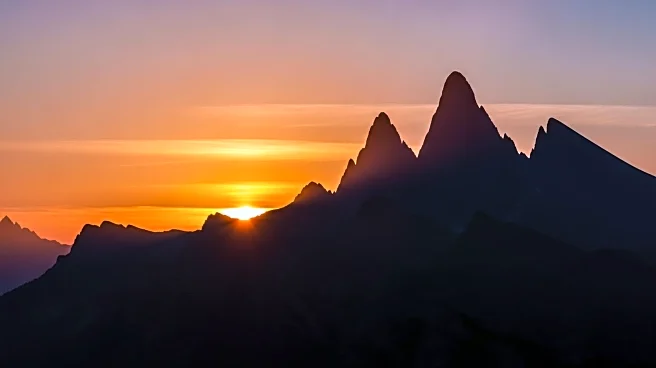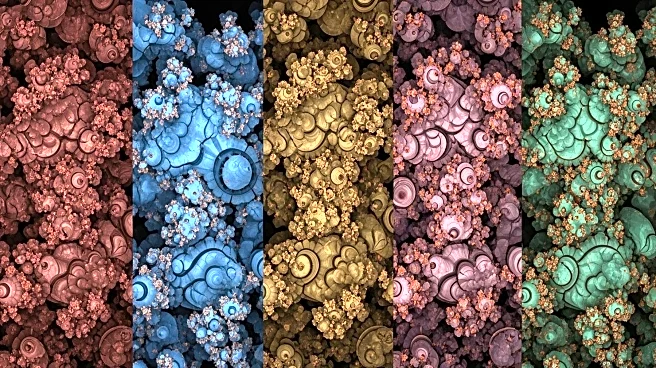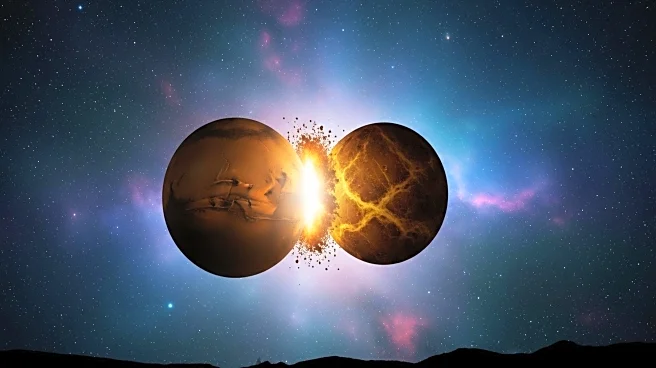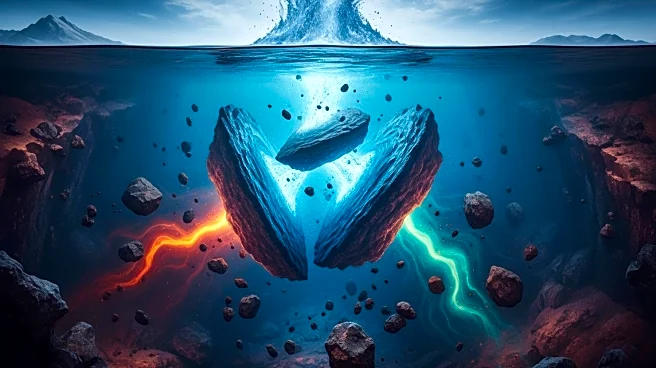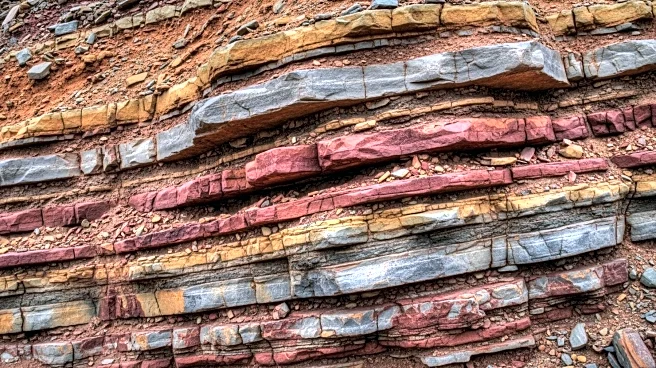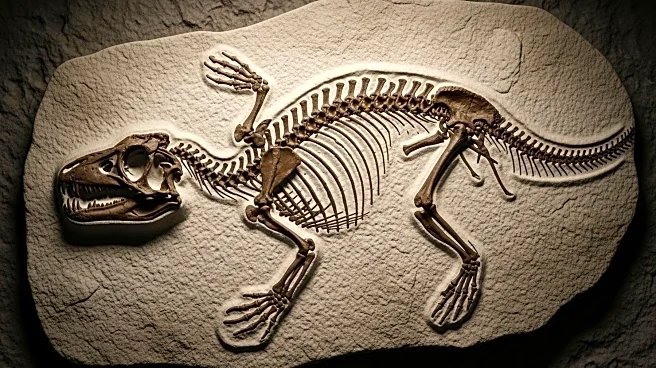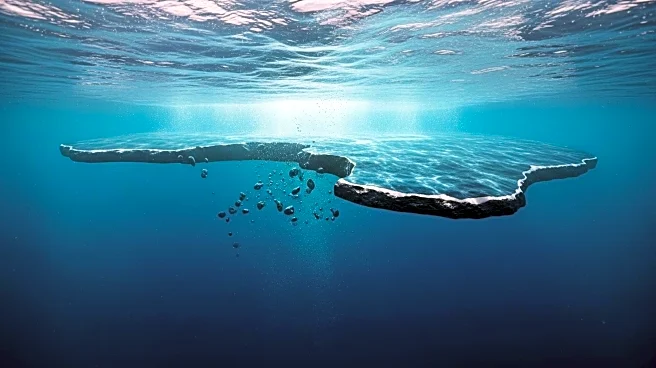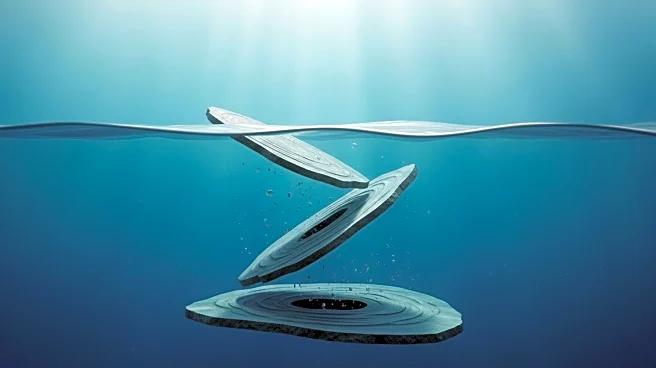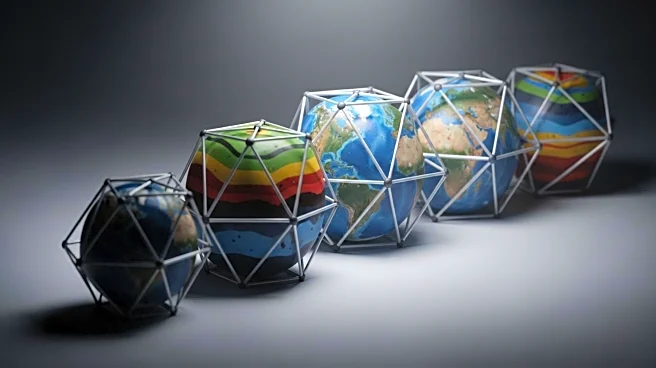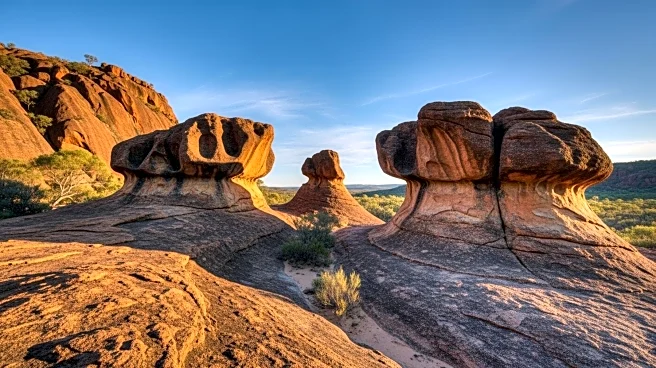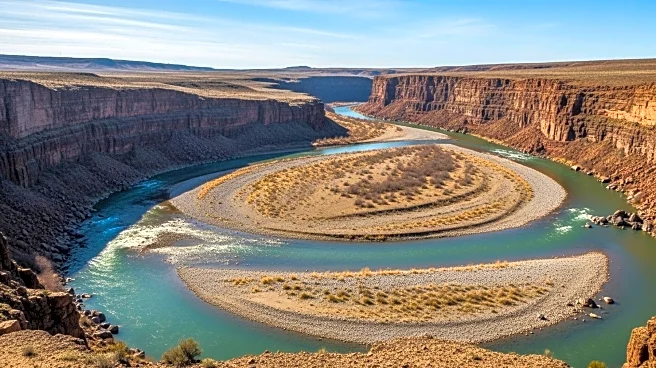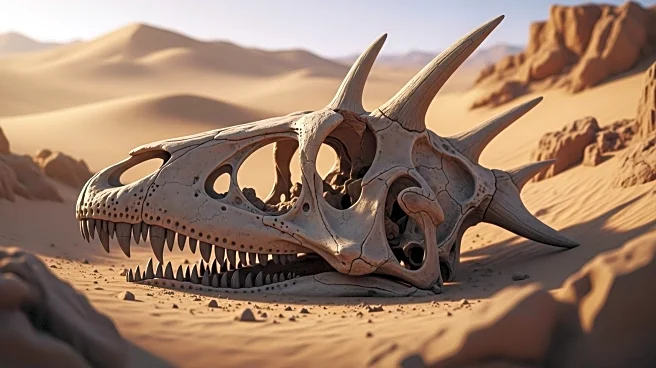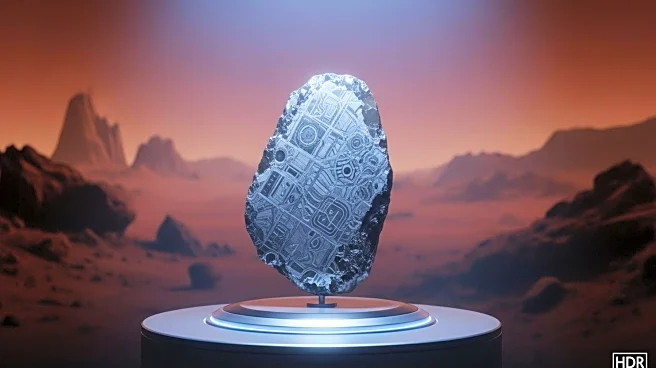What is the story about?
What's Happening?
A recent study published in the journal Tectonics challenges the century-old geological theory proposed by Émile Argand regarding the formation of the Himalayas. Argand's theory suggested that the collision of the Indian and Asian continental plates resulted in an ultra-thick crust supporting the mountain range. However, new simulations indicate a 'crust-mantle-crust' sandwich structure, with the Indian crust sliding beneath the Asian lithosphere, providing buoyancy and strength to the region. This model aligns better with seismic and geochemical data, suggesting a more complex interaction between the plates.
Why It's Important?
This new model has significant implications for understanding the geological processes that shape the Himalayas and other mountain ranges. It challenges existing assumptions about crustal dynamics and could lead to revised theories about plate tectonics and mountain formation. The findings may influence future geological research and impact related fields such as earthquake prediction and resource exploration. By providing a more accurate depiction of the Earth's crustal behavior, this study could enhance scientific knowledge and inform policy decisions related to geological hazards.
What's Next?
Further research is expected to incorporate 3D modeling to capture more detailed geological heterogeneities. Scientists may conduct additional studies to validate the new model and explore its applicability to other regions. The findings could prompt a reevaluation of geological theories and lead to new insights into the Earth's structural dynamics. Collaboration among geologists and related experts may increase to refine models and improve understanding of crustal interactions.
Beyond the Headlines
The study highlights the evolving nature of scientific understanding and the importance of questioning established theories. It underscores the role of advanced modeling techniques in uncovering new insights and the potential for interdisciplinary collaboration to address complex scientific questions. The findings may also inspire further exploration of the Earth's geological history and the factors influencing its current state.
AI Generated Content
Do you find this article useful?
